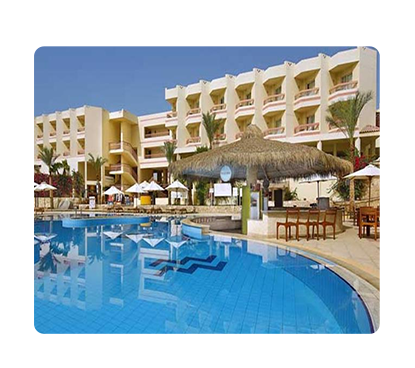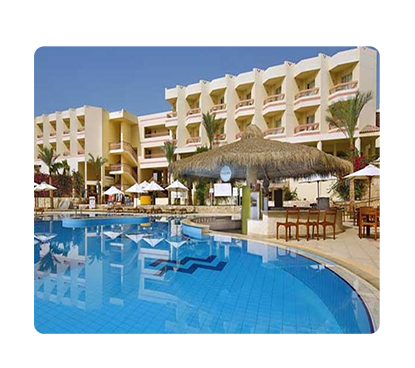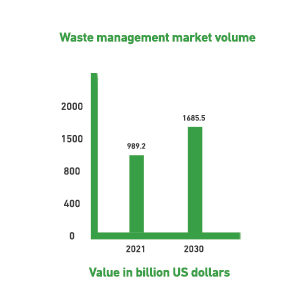The project is a five-star desert tourist resort comprising 100 villas, each with a private pool. The project will feature a traditional mud-based design, divided into: (158-square-meter luxury villas – 253-square-meter luxury villas – 253-square-meter villas – a museum – a restaurant – a reception hall – a swimming pool for each villa). The resort’s services include: (renting luxury villas of 158 square meters – renting luxury villas of 253 square meters – renting villas of 253 square meters – a museum – two restaurants).

Mashroo3k Economic Consulting Company is conducting a feasibility study for a desert tourist resort, and from analyzing and studying the size of the market it becomes clear that the tourist market, especially desert tourism, is in dire need of the project’s services, which are summarized in: (renting upscale villas with an area of 158 square meters – renting upscale villas with an area of 253 square meters – renting villas with an area of 253 square meters – a museum – two restaurants). The resort also contains a reception hall, a museum, and green spaces. The resort includes 100 villas with an innovative heritage design that embodies… The splendor of architecture is distributed into three categories, including 70 high-end villas, with an area of 158 meters per villa, 15 heritage villas with an area of 253 meters per villa, and 15 villas with an area of 253 meters. Not to mention that each villa has its own private swimming pool. The project seeks to create sustainable urban landscapes, attract visitors, and provide the necessary services at the highest level in accordance with international quality standards and at unbeatable prices in the tourism market. This is achieved by relying on distinguished and professional administrative and technical cadres in this field to provide services to the targeted sectors. The resort will seek to benefit from the growth and increasing size of the market.



Creating sustainable urban landscapes.
Protecting and exploiting geological, topographical, and natural elements.
Creating visitor attractions and providing necessary services.
Comprehensive development and improvement of tourism services.
Building distinguished recreational and aesthetic facilities according to advanced international standards and specifications.
Creating an outlet for residents and visitors.
The resort includes 100 villas with an innovative heritage design that embodies the splendor of architectural art. They are divided into three categories: (70 heritage villas, each measuring 158 square meters; 15 heritage villas, each measuring 253 square meters; and 15 villas, each measuring 253 square meters).
Creating tourist attractions and providing the necessary services for tourists.
Providing sufficient infrastructure to meet the needs of this project.
Selecting architectural elements that reflect a harmonious character and attractive, influential design elements.
Maintaining the growth and stability of the services provided by the desert tourism resort project.
Creating new investment opportunities with good returns.
Achieving a good return for the project owner.
Employing the workforce and improving their economic and social status.
Contribute to covering part of the growing demand for tourism services.
Executive summary
Study project services/products
Market Size Analysis
Risk Assessment
Technical study
Financial study
Organizational and administrative study

The Tourism Sector in the GCC Countries
The tourism sector is considered one of the most important contributors to global GDP. Its direct contribution represents 3.3% of the total global GDP, while its total contribution stands at 10.4%, amounting to USD 9.2 trillion. It is worth noting that jobs in the tourism sector represent 10.6% of total employment globally (334 million jobs), and global spending on leisure travel is estimated at around USD 2.37 trillion. The sector continues to grow steadily, to the extent that it creates one out of every four new jobs worldwide. This is a brief overview of global tourism indicators.
As for the tourism indicators in the Gulf Cooperation Council (GCC) countries, they are as follows:
The total number of inbound tourists to GCC countries reached 43.8 million, with an annual decline rate of 0.3% over a five-year period.
If we consider the distribution of inbound tourists to GCC countries in percentage terms, the United Arab Emirates alone accounted for approximately 49.2%, followed by Saudi Arabia with 31.1%. The chart below shows how the remaining tourists are distributed among the other GCC countries.
Tourist spending in the GCC countries recorded a consecutive growth of 12.1%, reaching USD 81.1 billion.
The UAE alone accounts for 47.30% of the total spending by inbound tourists to the GCC countries.
The total number of nights spent by tourists in the GCC countries reached 303.2 million nights, with Saudi Arabia accounting for 57.4% of those nights.
The total number of domestic (intra-GCC) tourists reached approximately 12.6 million individuals.
Intra-GCC tourism represented 28.7% of the total number of inbound tourists to the region. It is worth highlighting that Bahrain received the highest share of these intra-GCC tourists, with a remarkable 95.6%.
According to a publication by the GCC Statistical Center, the total number of hotel establishments across GCC countries reached 11,119.
The total number of rooms in these establishments amounted to approximately 620,517, with a projected growth rate of 2.3%.
The leisure and hospitality construction market in the GCC is expected to reach USD 642.3 billion by 2023.
According to the United Nations World Tourism Organization (UNWTO), GCC countries are expected to welcome 195 million visitors by the year 2030.

There is no doubt that the COVID-19 pandemic had a significant impact on global travel and tourism indicators, causing the sector’s contribution to global GDP to decline to just 6.1%, down from 10.3% in the year prior to the pandemic. However, the sector has recently begun to recover, and global indicators confirm this upward trend. Therefore, Mashroo3k Consulting recommends investing in this vital sector, based on the following factors:
According to the UN World Tourism Organization (UNWTO), the number of international tourists rose from 25.2 million in 1950 to 1.40 billion after 68 years.
By the end of 2021, a total of 2,246 hotels were opened worldwide. This number was expected to reach 2,805 hotels by the end of 2022, and 2,934 hotels by the end of 2023.
In 2021, 340,700 hotel rooms were opened globally. This number was expected to rise to 428,000 by the end of 2022, and to 447,600 by 2023.
By the end of 2021, the global tourism sector saw a 21.7% increase in its contribution to global GDP compared to the previous year, when the pandemic had severely impacted the industry. The sector’s contribution reached approximately USD 5.81 trillion.
The global tourism market was valued at approximately USD 1.311 trillion, and it is projected to grow to USD 2.291 trillion by 2030 (excluding the pandemic’s impact year).